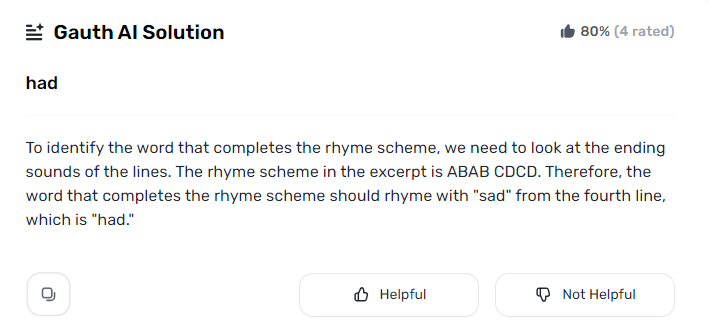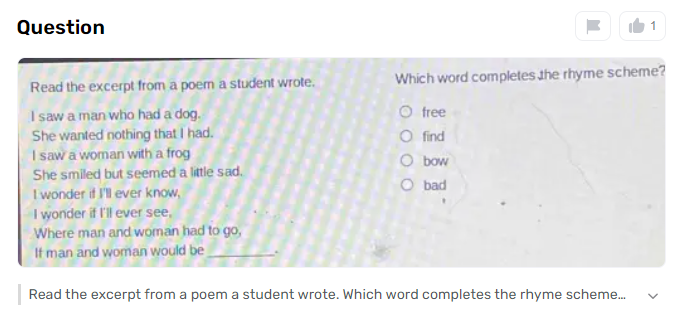Rhyme plans can give verse and verses a melodic quality, making them more essential and strong. However, finding the right word to complete a rhyme can be challenging. To figure out which words will work best in a given rhyme scheme, phonetics, and a little imagination are required. By learning several key procedures, you can deal with your ability to pick the best word to complete a rhyme plot.
Rhyme plans are a fundamental piece of verse that can essentially work on a sonnet’s general effect. We’ll look at some tips and tricks in this article to help you figure out which word completes the rhyme scheme? free find bow bad. By understanding the key principles of rhyme plots and working on your ability to pick fitting words, you can raise your refrain higher than at any time in recent memory.
What Is A Rhyme Scheme?
A sonnet or melody’s rhyme plot is an example of rhymes toward the finish of each line. It makes a sensation of plan and rhythm, adding to the overall movement of the piece. In rhyme schemes, letters are frequently used to indicate which lines rhyme with each other.
The intricacy of rhyme plans can differ, for certain sonnets following a steady example all through and others utilizing more inconsistent or unpredictable rhyme plans. By understanding rhyme schemes, you can anticipate which words will complete the rhyme and maintain your writing’s overall coherence and musicality.
Completing The Rhyme Scheme
Here are the steps to complete the rhyme scheme:
Identify the Rhyme Scheme Pattern
Distinguish the rhyme conspire design When writing poetry, it can be a fun and satisfying exercise to identify the rhyme scheme pattern. To begin, examine each line’s last word to see if it rhymes. For the first rhyming sound, label them with a letter beginning with “A.” Utilizing letters in order for each new rhyme, repeat this procedure for each new rhyming sound.
Understand the Syllable Count in Each Line
Understanding the number of syllables in each line is fundamental while concluding which word will finish the rhyme. It is crucial to give close consideration to the quantity of sounds in each word while counting syllables.
Consider the Stressed and Unstressed Syllables
While endeavouring to figure out which word will finish the rhyme plot in verse for a sonnet or melody. The syllables that are spoken with more accentuation or force are the ones that are focused on, while the syllables that are not stressed are spoken with even more care.
Listen to How the Words Sound When Read Aloud
It is vital to focus on how the words sound when perused out loud while endeavouring to figure out which word will finish a rhyme conspire. Focus on the musicality and stream of the words as they are expressed. You can determine whether a particular word will effectively complete the rhyme scheme by reading the words aloud.
Using Gauth For Completing Rhyme Scheme
Steps for using Gauth for completing rhyme scheme are given below:

Step 1: Visit The Gauth Platform
To start involving Gauth for finding a word that finishes a rhyme conspire, you would initially explore the Gauth site. Gauth is a flexible device intended to help with different phonetic errands, including finding words that fit explicit rhyme designs or finishing lines in verse or tune verses.
Step 2: Fulfill Question Area
You would enter your specific question or query once you were on the Gauth platform. You could, for instance, ask Gauth to come up with words that rhyme with a specific word or fall into a particular rhyme scheme (such as AABB, ABAB). Gauth will be able to produce relevant and accurate results that are specific to your requirements if you provide input that is clear and concise.
Step 3: Choose a free trial
Gauth is one of many AI tools that provides users with a free trial period to explore and evaluate the service. You can test Gauth’s capabilities and see if it meets your needs for finding rhyme scheme completions or other linguistic tasks by selecting the free trial.
Stage 4: Get Solution
Subsequent to presenting your question and using the free preliminary, Gauth will furnish you with an answer in light of its calculations and data set of words and rhymes. You’ll be able to effectively improve your creative writing or lyrical compositions with the help of the solution, which typically includes options or suggestions that complement the rhyme scheme or complete the intended poetic structure.
Final Words
Understanding rhyme plans can be precarious, however, with training and information on normal rhyming examples, you can begin to foresee which words will finish the rhyme plot in a sonnet or melody. Keep in mind the piece’s overall rhythm and structure, and listen for sounds with similar endings. By focusing on these components, you’ll have the option to pick the right words to make a consistent and fulfilling rhyme plot.

